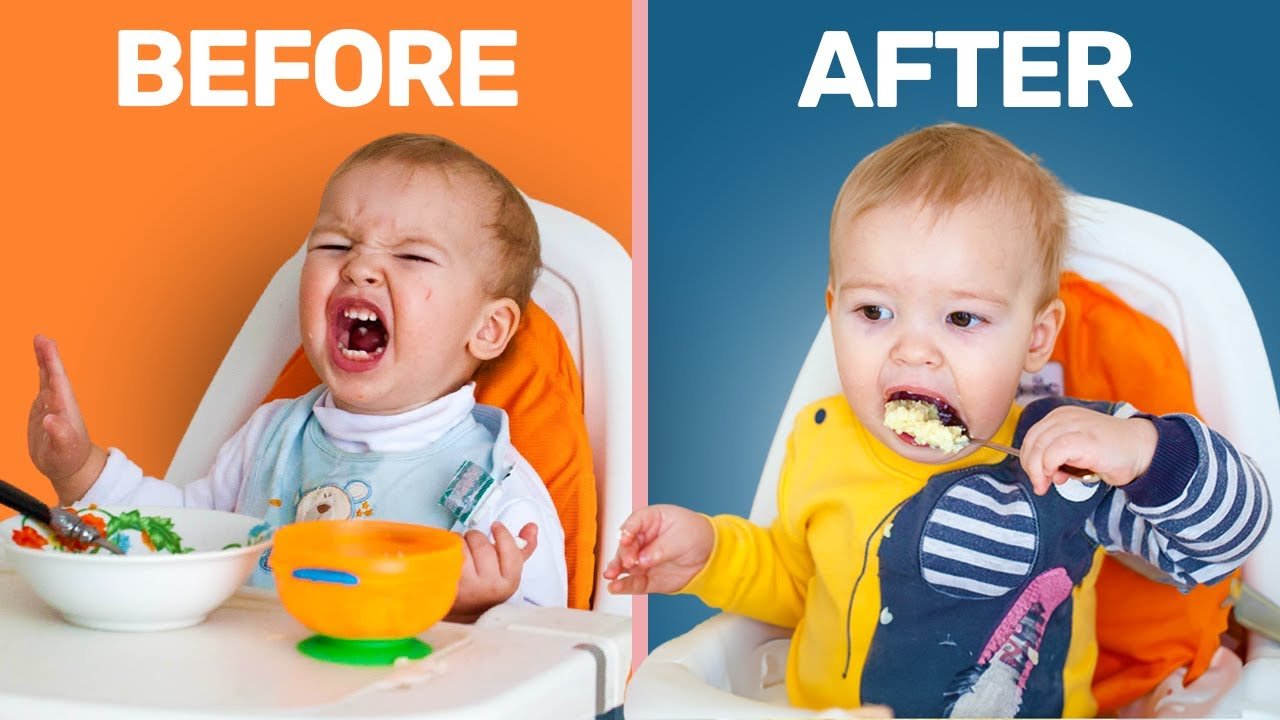Feeding babies can be a challenging and frustrating task, especially when they refuse to eat the food you offer them. But did you know that one key factor that can greatly impact mealtimes is the size and ergonomics of the high chair? Babies need to be able to see the food in front of them to be interested in eating it, and the width of the high chair seat can affect their ability to sit upright and use both hands. Leaning or slumping in a wide high chair can hinder arm movements and make swallowing more difficult. However, there are adjustments that can be made to improve mealtimes, such as raising the seat and adding foot and side support. Using the right spoon and a proper harness can also contribute to successful mealtimes. Skipping important steps in transitioning to solid foods can make introducing new foods challenging and lead to picky eating habits in the future. By following these steps, you can reduce stress and ensure a smoother mealtime experience for both you and your baby. Watch the video for more information and practical tips to make mealtimes easier.
Factors that Affect Mealtimes
Feeding babies can be difficult and frustrating, but there are several factors that can significantly impact mealtimes and make them either smooth and enjoyable or challenging and stressful. In this article, we will discuss these factors and explore ways to improve mealtimes with high chair adjustments, proper spoon selection, and the use of a secure harness. We will also delve into the importance of following the right steps when transitioning to solid foods and the benefits of doing so. Additionally, we will provide additional tips for successful mealtimes, such as creating a positive environment, encouraging self-feeding, introducing variety, and incorporating fun and playfulness.

Size and Ergonomics of High Chair
One key factor that can affect mealtimes is the size and ergonomics of the high chair. Babies need to be able to see the food in front of them to be interested in eating it. The width of the high chair seat also plays a role in a baby’s ability to sit upright and use both hands. Leaning or slumping in a wide high chair can hinder arm movements and make swallowing more difficult. Therefore, it is essential to choose a high chair that is proportionate to the baby’s size and provides visibility of the food.
Improving Mealtimes with High Chair Adjustments
To improve mealtimes, adjustments can be made to the high chair. Raising the seat can help align the tray or dining table with the baby’s shoulders, allowing them to properly see the food laid out in front of them. This is crucial as eating starts with our eyes, and if the baby can’t see the food clearly, they may be less inclined to try it. Additionally, adding foot and side support can enhance comfort and stability, ensuring that the baby can sit in an optimal position for eating.
Choosing the Right Spoon and Harness
Another aspect that contributes to successful mealtimes is choosing the right spoon. Proper spoon selection can make it easier for the baby to eat, reduce the risk of gagging and choking, and help develop the essential skills required for independent eating. It is important to consider the baby’s age and developmental stage when selecting the spoon.
Using a secure harness is also crucial for ensuring safety and comfort during mealtimes. The placement of the buckle prevents sliding down and ensures that the baby remains in an upright position. Chest buckle positioning is equally important, as it may hinder breathing if the baby slides down. It is important to ensure that the harness is snug but not overly tight, with two fingers fitting between the harness straps and the baby’s chest.
Ensuring Safety and Comfort with Harness
The proper positioning and snugness of the harness are essential for both safety and comfort during mealtimes. A secure harness prevents accidents and keeps the baby in an optimal position for eating. Placing the buckle correctly and positioning the chest buckle appropriately are key factors in ensuring that the harness serves its purpose effectively. The harness should be adjusted to fit the baby securely while still allowing them to move comfortably.
Transitioning to Solid Foods
When it comes to transitioning to solid foods, following the right steps is crucial. Introducing solids to babies should be done gradually and in a specific order to ensure that the baby adjusts well to the new textures and flavors. Skipping these steps can make introducing new foods challenging and increase the likelihood of the baby developing aversions.
Importance of Following Important Steps
Following the important steps when transitioning to solid foods has several benefits. Firstly, it reduces stress for both the parent and the baby. By introducing new foods gradually and allowing the baby to become accustomed to each step, mealtimes become a more relaxed and enjoyable experience for both parties. Secondly, following the right steps helps prevent picky eating habits in the future. By exposing the baby to a variety of textures and flavors from an early age, they are more likely to develop a diverse palate and be open to trying new foods.
Benefits of Following Transition Steps
The benefits of following the transition steps go beyond just the immediate mealtimes. By reducing stress and preventing picky eating habits, parents can establish healthy eating habits that will benefit their children in the long run. Additionally, by introducing a variety of foods, parents can ensure that their baby receives a balanced and nutritious diet, promoting optimal growth and development.
Additional Tips for Successful Mealtimes
Aside from the factors discussed above, there are additional tips that can contribute to successful mealtimes. Creating a positive environment is key to making mealtimes enjoyable for both the parent and the baby. This can be achieved by maintaining a calm and relaxed atmosphere, avoiding distractions, and engaging with the baby during meals. Encouraging self-feeding is another important tip, as it allows the baby to explore food and develop their fine motor skills. Introducing variety in terms of flavors, textures, and colors can also make mealtimes more interesting and enticing for the baby. Finally, incorporating fun and playfulness into mealtimes can help create a positive association with food and make the experience enjoyable for the baby.
Conclusion
Feeding babies can be a challenging task, but by understanding the factors that affect mealtimes and implementing the appropriate adjustments and techniques, mealtimes can become much easier and more enjoyable. By considering the size and ergonomics of the high chair, choosing the right spoon and harness, following the right steps when transitioning to solids, and incorporating additional tips for success, parents can create a positive and nurturing mealtime environment that promotes healthy eating habits and fosters the development of essential skills.

